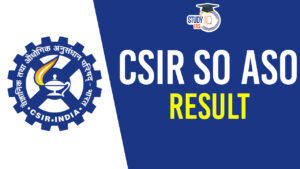Daily Current Affairs for UPSC 2023
Q) Recently seen in news, the ‘Kakhovka dam’ is located in which one of the following countries?
- China
- Turkey
- Ukraine
- Kazakhstan
Daily Current Affairs for UPSC – 6 June April 2023
Explanation:
- Option (3) is correct: Recently, Nova Kakhovka dam in southern Ukraine has collapsed. It was built in 1956 on the Dnipre River as part of the Kakhovka hydroelectric power plant. The dam, 30 metres (98 feet) tall and 3.2 km (2 miles) long and holds an 18 km3 reservoir, a volume about equal to the Great Salt Lake in the U.S. state of Utah. It supplies water to the Crimean Peninsula, which Russia claims to have annexed in 2014, and to the Zaporizhzhia nuclear plant, which is also under Russian control. Dam was captured by Russian forces at the beginning of their February 2022 invasion. The dam is a strategic water source for southern Ukraine’s Kherson region and the Russian-annexed Crimean Peninsula, and flooding could potentially block Ukrainian forces seeking to regain lost territory.
Q) With reference to ‘Project P75I’, consider the following statements:
- Under this project six scorpene class submarines are being constructed
- These submarines are being built in collaboration between France and India.
- These submarines are equipped with anti-ship and anti-surface combat capabilities.
How many of the statements given above is/are correct?
- Only one
- Only two
- All three
- None
Explanation:
- Statement 1 is incorrect: In June 1999, the Cabinet Committee on Security had approved a plan for the Indian Navy to induct indigenously build and induct submarines by 2030. It was broken down in two phases-the P-75 and P-75I. The P-75I phase envisages the construction of six conventional submarines with better sensors and weapons and the Air Independent Propulsion System (AIP).The project is the largest under the new strategic partnership model which will see an international Original Equipment Manufacturer (OEM) partner with an Indian company to manufacture submarines in India and share the technology.
- Statement 2 is incorrect: Recently, India and Germany discussed the progress of a deal for the procurement of six advanced conventional submarines by the Indian Navy under Project-75I. Under the first phase of P-75, signed in 2005, India and France signed a $3.75 billion contract for building six Scorpene class submarines.
- Statement 3 is correct: Under P75I submarines are expected to include advanced capabilities such as-Air-independent propulsion (AIP), Intelligence, Surveillance and Reconnaissance (ISR), Special operations forces (SOF), Anti-ship warfare (AShW), Anti-submarine warfare (ASW), Anti-surface warfare (ASuW), Land-attack capabilities, and other features.
Q) Consider the following statements about energy production in India:
- Andhra Pradesh has the largest installed capacity of renewable energy in India.
- Maharashtra has the lowest installed capacity of older coal power plants.
- Recently, the Indian States’ Energy Transition Report was released by NITI Aayog.
How many of the statements given above is/are correct?
- Only one
- Only two
- All three
- None
Explanation:
- Statements 1 and 3 are incorrect: The Institute for Energy Economics and Financial Analysis (IEEFA) and Ember recently released a report titled “Indian States’ Energy Transition“.The report analyzed 16 states that account for 90% of India’s yearly power demand. Their scores were calculated based on states’ performance on four major dimensions: Decarbonisation, Performance of the Power System, Readiness of the Power Ecosystem, Policies and Political Commitments. The report found that Renewable Energy installations are majorly concentrated (up to 78%) only in Karnataka, Tamil Nadu, Gujarat, Rajasthan, Maharashtra, and Andhra Pradesh. Karnataka is the only state that scored well across all four dimensions. Karnataka has been an early adopter of renewable energy and also has the highest share of renewables in its power supply mix (48%). Rajasthan has renewables supplying 29% of the state’s power mix. In March 2022, it became the state with the largest installed capacity of renewable energy.
- Statement 2 is incorrect: Haryana has the lowest installed capacity of older, more polluting coal power plants. Maharashtra has the highest power demand in India but has been slow in renewable energy uptake. It has not shut down older polluting coal power plants. Its renewable energy share (11%) is lower than most other states.
Q) With reference to Commission of Railway Safety (CRS), consider the following statements:
- The CRS is a governmental organization that performs inspection and advisory duties in cases of railway accidents.
- Its formation was recommended for the first time by the Government of India Act, 1935.
- It comes under the overall administrative control of the Ministry of Civil Aviation.
How many of the statements given above is/are correct?
- Only one
- Only two
- All three
- None
Explanation:
- Statements 1 and 2 are correct: The Commissioner of Railway Safety, part of Commission of Railway Safety (CRS), will investigate the train accident in Odisha. Commission of Railway Safety (CRS) is a government body that acts as the railway safety authority in the country. Its headquarters is in Lucknow. It deals with matters related to safety of rail travel and operations, apart from inspectorial, investigatory, and advisory functions. These functions of CRS are laid down in the Railways Act, 1989. Investigation of serious train accidents is one of the key responsibilities of the CRS. The Government of India Act, 1935 had recommended that functions for securing the safety of railway operations should be performed by an authority that was independent of the federal railway authority or the Railway Board.
- Statement 3 is correct: CRS comes under the administrative control of the Ministry of Civil Aviation (MoCA). It does not report to the Ministry of Railways of the Railway Board. The reason for its inclusion under Ministry of Civil Aviation is to keep it insulated from the influence of the country’s railway establishment and prevent conflicts of interest.
Q) Consider the following statements about Global Stocktake:
- The exercise of global stocktaking was mandated by the Kigali Agreement.
- It aims to improve the availability of technology and financial resources in the context of climate change.
Which of the statements given above is/are correct?
- 1 only
- 2 only
- Both 1 and 2
- Neither 1 nor 2
Explanation:
- Statement 1 is incorrect: Global Stocktake (GST) is an exercise that aims to assess the progress being made in the fight against climate change, and deciding future course of action to enhance the global effort to bridge the adequacy gap. The GST was mandated by the 2015 Paris Agreement.
- Statement 2 is correct: GST is expected to increase in the global response to climate change, not just in terms of reductions in greenhouse gas emissions, but also regarding adaptation, provision for finance and availability of technology. The current Stocktake has been going on for more than a year and is supposed to conclude this year. It is the first such exercise, which was mandated by the Paris Agreement to happen every five years.


 BPSC Post List 2024, Check out Salary Wi...
BPSC Post List 2024, Check out Salary Wi...
 CSIR SO ASO Result 2024 Expected Soon, C...
CSIR SO ASO Result 2024 Expected Soon, C...
 UPSC Syllabus 2024 - IAS Prelims and Mai...
UPSC Syllabus 2024 - IAS Prelims and Mai...

















